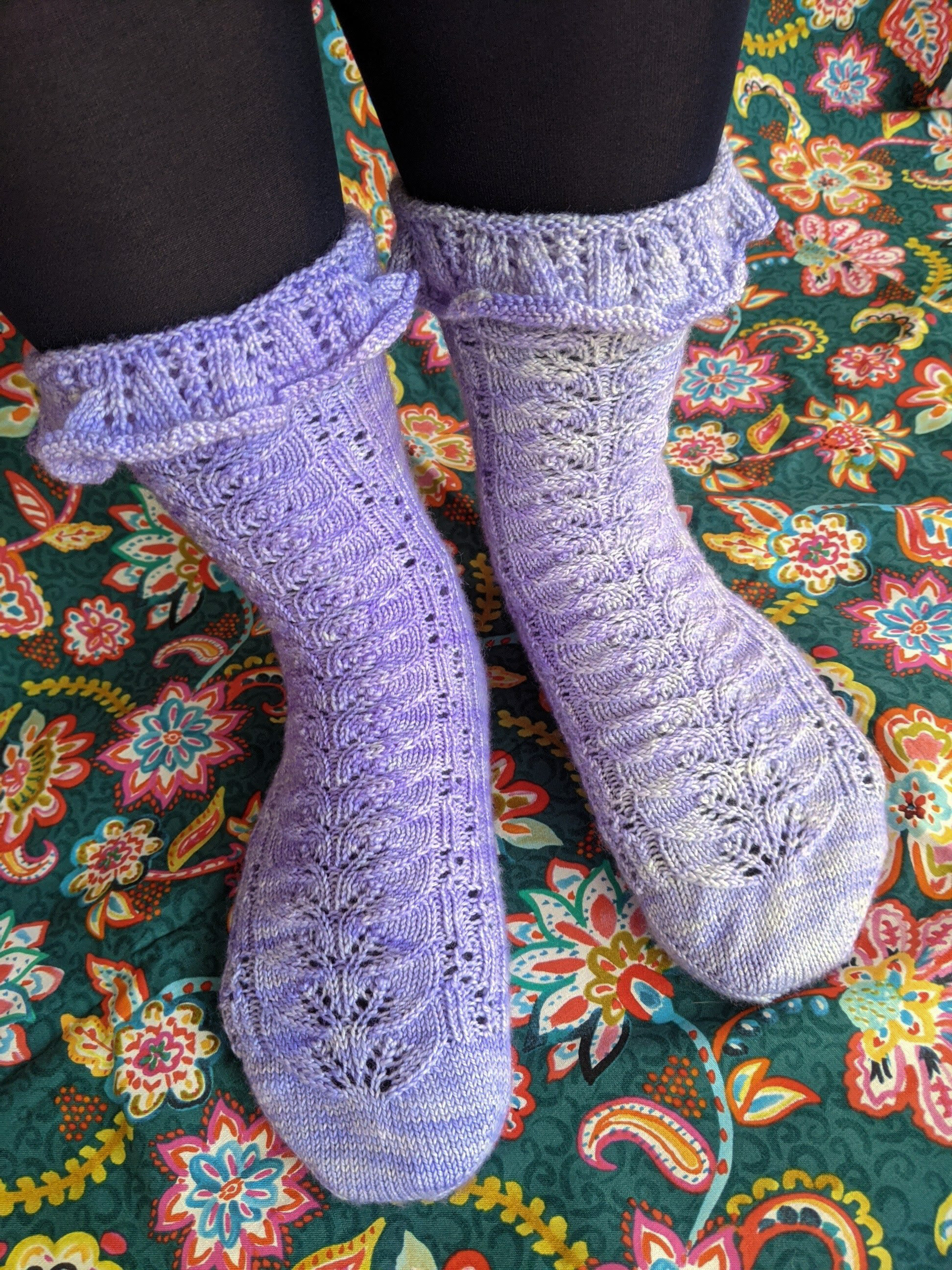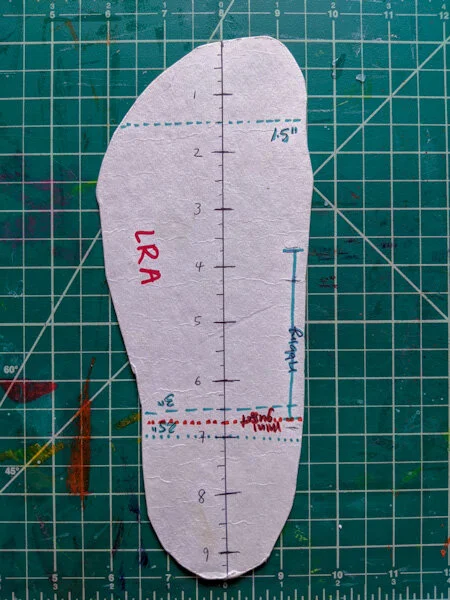Thanks to a random post in a sock knitting group on FB, I finally looked up the mathematical guidelines for a heel flap construction. I found that answer here (thank you very much Sara Morris Design!)
Of course, knowing the specific calculations, I couldn’t just leave it there, I had to make a spreadsheet! Having just finished the Sizing With Spreadsheets course from Swanky Emu Knits, rather than just plopping the heel calculations into a spreadsheet and calling it a day, I spent a few hours yesterday and today putting together a pattern from start to finish that incorporates the heel math. The spreadsheet is here.
Please note, in order to keep a clean base copy you can’t edit this sheet directly - you must go to File > Make a copy to save it for yourself.
Select your gauge and desired ease from the drop-down menus, then enter your leg and foot measurements in the fields below. After that, your personalized sock recipe will populate in the pattern text below! Gauge options range from fingering to DK/worsted, and both inches and centimeters are provided.
If you’re just interested in a free vanilla sock pattern, feel free to stop reading here!
If you’re interested in possibly creating your own spreadsheet, here’s a rundown of the math I used.
Cuff
Since this is a cuff-down sock, we’ll start with the circumference on the leg in inches or centimeters
Socks typically have negative ease, so now we need to decide how much negative ease. In my internet travels, I’ve seen 10% referenced a lot. I discovered that I personally prefer something closer to 20%. For the purposes of this spreadsheet, I decided to offer a range because WHY NOT but you can also stick with one if you’re doing a particular kind of design!
Negative ease = leg circ. * .1 (for 10%, replace with desired percentage)
We’ll use the leg circumference LESS negative ease to figure out how many stitches to cast on:
Cast-on circumference = leg circ. - negative ease
Now we need to know the gauge - this can be whatever works for your yarn weight. For ease of calculations, I used the same for both in & cm calculations - how many stitches do you get in either 1 in or 2.5 cm? This doesn’t have to be a whole number, either, because we’ll take care of that next.
Number of stitches to cast on = (cast-on circ. * gauge) rounded to a whole number
For reasons that will become important later, I actually recommend rounding this to a multiple of 4.
Divide this number in half - that’s the stitch count for the front/back of the leg and will be used in the heel and toe.
After this, knit your cuff and leg as desired, then move onto the heel!
Heel flap
The heel flap can be whatever style you want (though usually something with more thickness like slipped stitches or garter is recommended since stockinette could wear through more quickly).
Most places I’ve referenced have said that the number of rows in the heel flap should equal half of the cast-on count. (So I guess that would mean the rule is (half of your leg circ. - neg ease)?) I’ve found that slip-stitch heels feel pretty short when I only work half the cast-on amount in rows, so this won’t work for me.
At some point during Sock Madness, I saw a comment that said to knit to the length of your thumb on the heel flap. Since starting to do that, I’ve found my heel flaps have been sufficiently deep, so I’m using it! Of course, if you have a better measurement to base the heel flap on, I’m all ears! Let me know if comments.
On the heel flap, knit an even number of rows and end after a purl row.
This is where I thank Sara Morris Designs for her blog post of wisdom.
Heel flaps generally have a flat portion around which the decreases occur - the blog post recommended 10% of the total cast-on count, and to round down. (There’s another bit about whether to make this number even or odd to match half of your stitch count, but I can’t figure out how to express that in calculations yet so I’m skipping it.)
Center of heel flap = (Total cast-on * .1) rounded down to the nearest whole number
The decreases need to be centered on the heel, so now we figure out how to approach that first heel turn row:
(Center of heel flap + half stitch count) / 2
You’ll knit that many, ssk, k1, and turn.
How many to purl back = Center of heel flap + 1
Purl that many, p2tog, p1, turn.
And continue until all heel stitches are worked!
Gusset
How many stitches to pick up on each side of heel flap = Rows in heel flap / 2
You’ll probably also want 1 or 2 in the gap where you resume working across the instep!
Decrease every other round until you get to your foot circumference - the circumference around the ball of your foot.
Foot circumference is calculated the same way as the calf - Subtract your desired negative ease from the total measurement, then multiply by the stitch gauge.
Toe
For a wedge toe, I aim to decrease to 2/3 of the total stitches doing increases every other round, then to 1/3 of the total stitches every round. To figure out how long the toe will be (and thus where you need to start it…)
Rounds for every-other-round decreases = total stitches - 2/3 total stitches
Rounds for every-round-decreases = (2/3 stitches - 1/3 stitches) / 2
Add up for the total number of rounds, then divide by your round gauge. That’s how long the toe will take, so subtracting it from your total foot length will tell you where to start!














